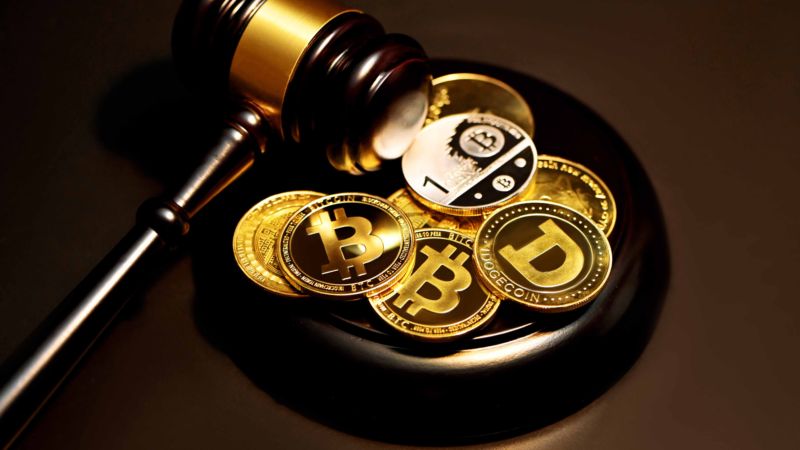Following recent turmoil, a host of regulatory bodies and policymakers have called for stricter supervision of the crypto sector to protect investors and ensure financial stability
The spillover from crypto markets to traditional financial markets remains limited, but there is an urgent need for the “swift development and implementation” of consistent and comprehensive regulation for crypto-asset issuers and service providers, with a view to holding crypto-assets, including stablecoins, to the same standards as the rest of the financial system, the G7 group announced in its latest communication recently.
Meanwhile, the Bank for International Settlements (BIS) argued in a paper that the crypto sector was increasingly used for speculation by unsophisticated retail investors and that the lack of crypto adoption by traditional banks had caused the growth of a “shadow crypto-financial system” in which crypto-exchanges held a dominant, yet largely unregulated role.
“The flipside of limited adoption by banks is a dominant role for novel ‘crypto-exchanges’,” the paper stated. “Compared to existing regulated exchanges for ‘traditional’ financial assets, the regulatory and supervisory oversight of crypto-exchanges — encompassing consumer protection, market integrity, trading, disclosure, prudential, and addressing anti-money laundering, combatting the financing of terrorism — remains patchy at best.”
Retail investors did not generally buy into the libertarian ideas behind crypto-assets such as Bitcoin, and accepted that crypto-exchanges held their assets in custody, as opposed to on the blockchain, the paper argued. Large crypto-exchanges such as Binance and Coinbase do not write every transaction to the blockchain due to the cost and energy required, and instead operate an internal ledger of transactions on a traditional standardized program language-type database.
You can access Thomson Reuters’ Cryptos on the Rise 2022 report here.
“Instead of relying on a trust-free — i.e., on-chain — environment, a new set of agents has come to the fore that is offering convenience, market access, transaction scale and liquidity to these markets in much the same manner as in commercial banking and securities trading, albeit without the same degree of regulatory and supervisory oversight,” the paper noted. “Crypto intermediaries… should be subject to the same types of regulation and oversight as intermediaries in economically equivalent asset classes. The purportedly decentralized nature of cryptocurrencies does not negate the need for these critical public policy functions.”
More data needed
To counter future risk to the broader financial system, the BIS paper proposed enhancing the collection and publication of cryptocurrency trading data in a more rigorous manner, such as through “embedded supervision”, which would gather information in distributed ledger-based finance and decentralized finance with the aim of improving the quality of data available to supervisors. “Data gaps risk undermining the ability of authorities to oversee and regulate cryptocurrencies holistically.”
Indeed, data gaps have also been singled out in the fight against money laundering, with regulators seeking to gather more information on the parties involved in crypto-transactions. A proposal recently raised in the European Parliament involved introducing the Financial Action Task Force’s (FATF) “travel rule” for crypto-transaction monitoring purposes, a move that was supported by the recent G7 statement.
Stablecoins in the mix
The G7 statement also called for stronger disclosure and regulatory reporting for reserve assets backing stablecoins such as Tether and the recently crashed TerraUSD. “The G7 remains committed to high regulatory standards for global stablecoins, following the principle of same activity, same risk, same regulation,” the G7 statement noted. “No global stablecoin project should begin operation until it adequately addresses relevant legal, regulatory, and oversight requirements through appropriate design and by adhering to applicable standards.”
The BIS paper also warned against the potential for stablecoins to pose a systemic threat to the broader financial system, saying risks in the “shadow” corners of the financial system could quickly find their way to regulated institutions. Left unaddressed, the evolving crypto landscape would see conventional and regulated intermediaries increasingly linked to an unregulated crypto financial system, the paper stated. As such, the fundamental policy choice was to either focus on a framework that allowed such interlinkages but enforce a more level playing field with regard to the regulation and supervision of financial services, or limit the level of interlinkage between the two systems.
“Separating both systems could prove challenging at a global level, making the former solution inevitable,” according to the paper. “Initiatives to promote regulatory clarity on the treatment of these potential exposures… could help to ensure a more level playing field and ensure the prudent management of risks from a micro-prudential and macro-prudential perspective. In practice, this would mean applying more stringent regulatory and supervisory oversight of crypto-exchanges with regard to the provision of financial services… while applying a conservative bank prudential regulatory treatment for cryptocurrency exposures.”
Meanwhile, Charles Randell, chair of the UK Financial Conduct Authority, said in a recent speech that the regulator was not ready to take over the supervision of the crypto sector in the UK, despite the UK government’s ambition to create a world-leading market for crypto-assets, citing the speculative and volatile nature of the market.
Separately, the European Central Bank (ECB) on said in its biannual financial stability review that exposure to crypto by banks and other financial institutions on a wide scale could put capital at risk and damage investor confidence, lending and financial markets. “Systemic risk increases in line with the level of interconnectedness between crypto-assets and the traditional financial sector,” the ECB stated, adding that highly leveraged trading offered by crypto-exchanges has seen investors borrow funds to buy greater exposure to crypto, also heightening financial stability risks.
Further, data shortcomings in the sector are also hindering the assessment of financial risks, the ECN noted, warning that publications by crypto-exchanges and data aggregators should be treated with caution.
Additional reporting by Francesco Canepa of Reuters.







